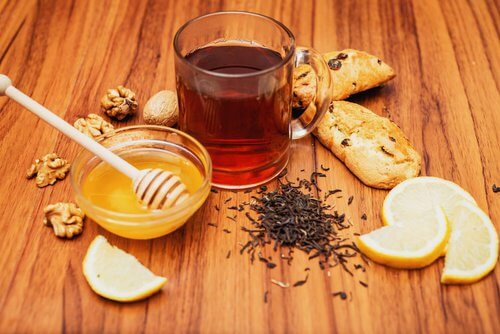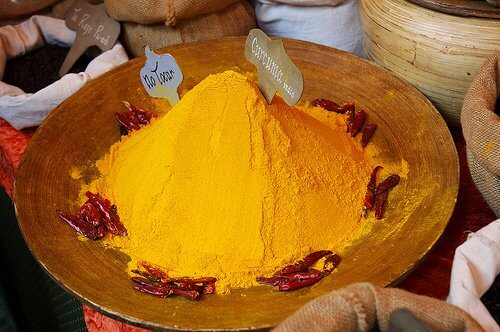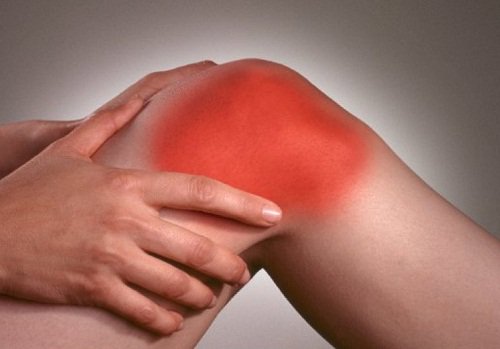Turmeric Super Drink to Treat Arthritis, Relive Pain and Inflammation, and Protect the Heart

Scientists have known for a long time that a diet high in antioxidants is key to fighting and stopping the action of “free radicals.” One food high in antioxidants is turmeric. A drink made with turmeric juice can be an effective pain reliever and anti-inflammatory.
Free radicals are molecules that can lead to different kinds of illnesses, including cancer. Different studies have been able to determine that there are many foods with antioxidant properties.
Properties of turmeric
Because of their beneficial properties, foods rich in antioxidants can improve your health and help prevent different illnesses.
One powerful antioxidant-rich food is turmeric. This spice, considered one of the most beneficial for your health, has anti-inflammatory and pain-relieving properties.
Just as turmeric is included as an ingredient in many recipes around the world, it is also a part of many natural remedies and therapies.
Today, we’ll share a turmeric juice recipe that can be prepared with the spice in powdered form or even better with the fresh root.
This powerful drink has a high analgesic and anti-inflammatory power and many other health benefits.
Healthy turmeric super drink

This incredible remedy is part of traditional Eastern medicine, and its recipe has spread all over the world because of its proven effectiveness.
All the ingredients used are from a natural source. The drink has a very positive effect on the body, and can help prevent illnesses and relieve pain of all sorts.
Want other uses of turmeric? Check out:
Turmeric Uses for Menopause
Ingredients
- 1 tablespoon of powdered turmeric
- 5 cm (2 inches) of ginger root
- 5 carrots
- 2 lemons
- 1 orange
- 1 cucumber
Peel the citrus fruits, the ginger root, and the carrots. Mix all the ingredients in a blender. Process until you have obtained the turmeric super drink. For best, results, drink it a half hour before breakfast.
What are the curative properties of this drink?

- It fights arthritis: The juice from turmeric has a high analgesic and anti-inflammatory power that can help to fight arthritis and its symptoms. The active ingredient in turmeric, called curcumin, relieves the stiffness and swelling in the joints according to this study published in Clinical Interventions in Aging.
- Helps with mental issues: It’s important to note that curcumin is able to cross the hematoencephalic barrier and has properties that help protect the brain. Consequently, it can help reduce the risk of depression and dementia. Some short-term placebo-controlled trials found that curcumin seems to be safe, well-tolerated, and effective for patients with depression. It might also be useful as a novel antidepressant.
- Reduces pain: turmeric acts as a natural analgesic that can help to reduce and control different types of pains. Turmeric contains NF-B, a protein capable of activating the defense mechanisms of the body that help to fight against pain.

- Prevents digestive problems: According to a study published in the Journal of Basic and Clinical Physiology and Pharmacology, this drink from turmeric helps to reduce stomach bloating, alleviates acid and gastritis. And, further, you can include more turmeric in your diet to take the most advantage of this benefit.
- Prevents heart problems: the consumption of the juice from turmeric can help to reduce the levels of bad cholesterol, protect the heart and improve the health of the blood vessels. It is recommended to help prevent different types of heart problems.
- Eliminates toxins: The drink from turmeric has cleansing and detoxing properties. These properties stimulate the elimination of toxic substances from the body, helping to prevent different illnesses. Turmeric can also improve skin health and appearance.
- Protects the liver: turmeric acts as a biliary tonic and protects the liver thanks to its high content of the substance curcumin. There are various studies that have determined that turmeric could help to eliminate stones from the gallbladder, facilitate the digestion of fats, and have an anti-inflammatory effect.
Make yourself a turmeric super drink today and reap the health benefits!
All cited sources were thoroughly reviewed by our team to ensure their quality, reliability, currency, and validity. The bibliography of this article was considered reliable and of academic or scientific accuracy.
- Ammon, H., & Wahl, M. (1991). Pharmacology of Curcuma longa. Planta Medica. https://doi.org/10.1055/s-2006-960004
- Araújo, C. A. C., & Leon, L. L. (2001). Biological activities of Curcuma longa L. Memorias Do Instituto Oswaldo Cruz. https://doi.org/10.1590/S0074-02762001000500026
- Lee, J., Jung, Y., Shin, J. H., Kim, H. K., Moon, B. C., Ryu, D. H., & Hwang, G. S. (2014). Secondary metabolite profiling of curcuma species grown at different locations using GC/TOF and UPLC/Q-TOF MS. Molecules. https://doi.org/10.3390/molecules19079535
- Fadus, M. C., Lau, C., Bikhchandani, J., & Lynch, H. T. (2017). Curcumin: An age-old anti-inflammatory and anti-neoplastic agent. Journal of traditional and complementary medicine, 7(3), 339-346. https://www.sciencedirect.com/science/article/pii/S2225411016302528
- Kuptniratsaikul, V., Dajpratham, P., Taechaarpornkul, W., Buntragulpoontawee, M., Lukkanapichonchut, P., Chootip, C., … & Laongpech, S. (2014). Efficacy and safety of Curcuma domestica extracts compared with ibuprofen in patients with knee osteoarthritis: a multicenter study. Clinical Interventions in aging, 9, 451. https://www.ncbi.nlm.nih.gov/pubmed/24672232
- Gupta, S. C., Patchva, S., & Aggarwal, B. B. (2013). Therapeutic roles of curcumin: lessons learned from clinical trials. The AAPS journal, 15(1), 195-218. https://www.ncbi.nlm.nih.gov/pmc/articles/PMC3535097/
- Liju, V. B., Jeena, K., & Kuttan, R. (2015). Gastroprotective activity of essential oils from turmeric and ginger. Journal of basic and clinical physiology and pharmacology, 26(1), 95-103. https://www.ncbi.nlm.nih.gov/pubmed/24756059
- Zhou, H., S Beevers, C., & Huang, S. (2011). The targets of curcumin. Current drug targets, 12(3), 332-347. https://www.ncbi.nlm.nih.gov/pubmed/20955148
This text is provided for informational purposes only and does not replace consultation with a professional. If in doubt, consult your specialist.








